IMAGES COME FIRST
Andrea Alberghini interviews Manuele Fior
(MAS Context #20 “Narrative”, Winter 2013, available in pdf here.)
It is a long time that we wanted to publish the work of Italian comic artist, illustrator (and friend) Manuele Fior. Author of many successful graphic novels, Fior has studied architecture and even worked as an architect for some years before entirely dedicating to comics. This background is the more and more visible in his stories, as the author is trying to channel his interest in architecture and urban development into his personal narrative.
The following interview was given by Manuele Fior to Andrea Alberghini, editor of Comic Metropolis, a very recommended Italian blog dedicated to the relationships between comics, narrative and architecture, and we believe it represents a good introduction to the artistic sensibility of the Italian cartoonist.
“Images Come First“, by architect Andrea Alberghini, was originally published in the magazine MAS Context #20 “Narrative” (and later in Italian in the online magazine Fumettologica, under the title “Manuele Fior e l’architettura: una conversazione“). Both author and publisher (Andrea Alberghini and Iker Gil, Editor in Chief) have kindly granted us the permission to republish the article and the images.

La signorina Else, Coconino Press, 2009 (Detail) © Manuele Fior
Born in Cesena (Italy) in 1975, Manuele Fior received his degree in architecture from IUAV in 2000. He then moved to Berlin, where he worked until 2005 as cartoonist, illustrator and architect. His career in comics began in 2001 with his collaboration with the German publisher Avant-Verlag on the magazine Plaque. Since then he has created several graphic novels, including Les gens le dimanche (Atrabile, 2004), Rosso Oltremare (Coconino Press/Atrabile, 2006), La signorina Else (Coconino Press/Delcourt, 2009), Cinquemila chilometri al secondo (Coconino Press/Atrabile, 2010), and most recently L’intervista (Coconino Press/Futuropolis, 2013).
His illustrations have been published in magazines such as The New Yorker, Le Monde, Vanity Fair, Internazionale, Rolling Stone, Les Inrocks and in newspapers such as La Repubblica, Il Sole 24 Ore, and Il Manifesto. He has collaborated with the publishing houses Feltrinelli, Einaudi, Edizioni EL, Fabbri, Nathan, Bayard and the Far East Film Festival.
Architect Andrea Alberghini talked to Manuele to learn about the relationship between his work as an architect and his cartoons, his influences, the different techniques found in his graphic novels and the importance of the settings he chooses.

AA: You are a comic book artist and an illustrator, but you have a background as an architect. For a short period you also worked professionally in both fields at the same time. Did your interests in architecture and comics came up at the same time or did one lead to the other in a more or less natural way?
MF: My interest in comics was born very early. In elementary school, I used to fill entire exercise books with comics. The interest in architecture came later in a more tangential way. My family didn’t like art that much, so I felt obliged to orient my education toward more scientific studies. My parents would have been happier if I chose engineering, but I found a fair compromise in architecture. At the beginning, after a couple of years, I wanted to drop out of University, but for various reasons I didn’t and I started to work in the office of Romano Burelli, a professor who really enthused me. He was an architect and a painter; we shared the same interests. I became very interested in architecture and, above all, I began visiting it. With my university colleagues I toured France to visit Le Corbusier’s masterpieces. I have to say that I’ve always kept architecture and comics apart from each other. Only recently have I begun experimenting with possible contaminations. The more trivial way is to insert in my comics famous buildings I studied at the University. But you can do more than just mere citations. Comics have a great visionary capacity, and architecture draws from it. Take Moebius’ Venise Celeste, for example, or his visions of a multilevel vertical city so influential on the whole Blade Runner urban imagery. So, without flaunting any programmatic manifesto, I can say that I’m currently trying to channel my interest in architecture into my graphic novels, not simply citing famous buildings but also trying to describe the way cities change.
AA: What were your most important influences in your training years in the fields of architecture and comics?
MF: IUAV [The School of Architecture at Venice] mainly focused on Rationalism and the Italian interpretations of the International Style. Le Corbusier was everywhere, as well as the Italian Rationalists like Terragni. At the beginning, it wasn’t easy for me to get into this kind of architecture; I think this architecture above all has to be visited and studied. On the contrary, I became fond of Organic Architecture that was brought into Venice by Carlo Scarpa and other Friulian architects like Marcello D’Olivo and Angelo Masieri. So, even if it sounds like a paradox, the biggest influences I still feel today are these two antithetical tendencies: Rationalism (the International Style) and Organic Architecture, both of which I visited in Italy, since I’ve never been in the United States. In Friuli Venezia-Giulia there are various buildings by Scarpa and Masieri. It’s a kind of architecture in which drawing is predominant. Take Scarpa, for example. Most of the design passes through the drawing hand. It was during my University years that I stopped reading superhero comics and became fascinated by Lorenzo Mattotti, a cartoonist and artist who had a background in architecture, too, and who I felt was able to transpose in his comics the same intensity that could be found in certain architectural masterpieces. For me they were the most interesting things that could be found in the field of comics at the time. Actually, I’ve always been fascinated by these architects-cartoonists. I think also of Guido Crepax.
Many people ask me how much architecture can be found in a comic book. The answer isn’t that easy. There’s not only the direct citation of famous buildings. An architectural plan and a comic book page share some common elements. It’s just like when you compare a painting by Mondrian and a house plan by Mies van der Rohe: there are similarities. The rules of Architectural Composition virtually correspond to the ones that give structure to a comic book page. For me it’s not the mere stacking of strips—like in standard French comics—but the view of the page as a whole dictates the articulation of the panels and the rhythm of the story.
AA: You said that you’ve always kept apart your working activities as an architect and as a cartoonist. Was it difficult to harmonize them? Why, at a certain point, did you choose to drop out of architecture and devote yourself exclusively to comics and illustration?
MF: Harmonizing the two activities was very difficult because they both require an absolute devotion. It was very clear to me from the beginning that I could pursue just one of these two careers. When I first showed my drawings to Mattotti, he asked me: “Okay, but what do you want to be? An architect or a cartoonist?” The choice was done out of contingency. I lived in Berlin for five years working as an architect. After the boom of the 90s, in 2002-2003 I found myself with less and less work to do. The firm I worked for closed down and in my free time I began doing some illustrations. Then a publisher stepped forward and offered to publish a short story of mine. From then on, I arranged to be involved in more operational tasks (3D, drawings) and gradually left behind the design process, because designing is a very demanding task. In the meantime, in Italy, the publisher Coconino Press was born. There were concrete opportunities to publish high-quality graphic novels. So I had to choose, and I chose to become a full-time comic book artist. It’s been six or seven years now.
AA: Do you still feel the urge to build? Do you think it will be possible for you to return to architecture one day?
MF: The desire remains the same, even if architecture is a field you have to practice if you don’t want to get rusty. Sincerely, I don’t think I’ll ever practice it as a job anymore. But in the future, I’d like to come back to designing, even if only in my private life. I really miss the design process: interacting with other experts, making models, going to construction sites, but realistically, I don’t think I’ll come back to architecture as a full time job. I’m now too focused on comics.
AA: Have you ever used comics in your job as an architect, or when you were a student, to introduce a narrative element in your design presentations?
MF: No. When I went to work in the office of Romano Burelli, who was very rigid but also had a very personal style, I drew a clear line. In fact, architectural design has nothing to do with comics. I always tried to use the barest graphic presentation to highlight the intrinsic qualities of the design and not the presentation in itself. I was fascinated by Le Corbusier’s and Mies van der Rohe’s drawings, of course, but I always kept the two things apart.
AA: Catchy architectural representations done with comics and other atypical graphisms are a quite common trend now. What’s your opinion?
MF: I’m not very up-to-date on the subject. My most recent memories concern Archigram! Anyway I’m very skeptical about renderings, 3Ds and so on. Obviously, you don’t always have to present an architectural design to experts. But I think architecture is contained in plans and sections. I don’t believe in rendering aesthetics. Anyway, if you do things intelligently and with a bit of irony, why not? I believe Botta did something similar, a quick comic strip about his architecture.
AA: Above all I believe it’s a problem of proficiency.
MF: The language of comics has precise rules. You can’t just improvise for promotional purposes.

Les gens le dimanche, Atrabile, 2004 © Manuele Fior
AA: Your architectural background shows through your comics. Your spatial and typological competence, for instance, is self-evident. Is there something more? The original art of Les Gens le dimanche (2004), your first graphic novel, was done on tracing paper like the old technical drawings intended for heliographic reproduction, even though the book is printed in ordinary black and white.
MF: When I came back to comics, I was working as a full-time architect. I wasn’t truly aware of the state of the art in comics. So I used the materials that were at hand at the office. It wasn’t something required by printing demands; those were simply the materials I was confident with at the time.
AA: Fausto, the protagonist of Rosso Oltremare (2007), your second graphic novel, is an architect obsessed by the irreconcilability of rationality and natural laws. Your reference to the Modulor in the shadow he casts on the floor when he raises his right arm in the course of his delirium is very beautiful and effective. Fausto then gets lost in the Labyrinth, which is a metaphorical space. Is the search for an absolute, unassailable architecture just a narrative starting point or is it a problem you really felt as an architect? What does the Labyrinth mean for you?
MF: No. On the contrary, my idea of architecture is the Wrightian one of an architecture totally ‘assailable’ by time, by nature. The sheer beauty of some of Wright’s buildings in ruins strikes me. I’ve always been charmed by architecture that little by little fades into the landscape. I believe it was Ruskin who spoke about this subject. On the other end, for instance, I’ve always been annoyed by the fact that Ville Savoye had to be continuously kept clean because its sense was in its alienation from its surroundings, the building being a sort of spaceship lifted over the soil. Of course I like lots of other things done by Le Corbusier. So I can say that I’ve never aimed to an immutable and unassailable architecture.
About the Labyrinth… who knows? It’s a difficult question. I have to admit that in Rosso Oltremare the problem is left unresolved. Even the book’s plot is unresolved. If I could go back, I would change lots of things because there are some problems with the story. It’s not clear what the Labyrinth really represents. I put it in the book because I was flirting with all this mythological imagery: the minotaur, the father and son relationship, and the Labyrinth were an interesting setting in which to stage part of the story.
Sometimes I can only analyze in retrospect the things I do because in the beginning, there isn’t an idea, a theoretical project or frame, but only the desire to enter an enigma and try to untangle it from within. InRosso Oltremare, I didn’t succeed.

Rosso Oltremare, Coconino Press, 2006 © Manuele Fior
AA: Quite appropriate, I think, for a tale with a Labyrinth at its center! Anyway, the Labyrinth is a metaphysical architecture. Let’s think of the powerful image of the central courtyard, and a metaphysical architecture is also the one that appears in Piero’s dream on the train to Assuan in5000 chilometri al secondo (2010), your fourth graphic novel. You also did a short story titledGiorgio e il Drago (2002), which is a reference to Giorgio De Chirico, the metaphysical painter. Have you ever thought to use comics to give vent to unattainable architectural fantasies?
MF: When I began doing comics, I was very influenced by Lorenzo Mattotti’s work and I wanted my comics to be a deviation from the necessarily very concrete and technical drawings I was doing at the time. So in my first comics there was a sort of utopian, metaphysical, dreamlike architecture. Then things changed. Reconciling with existing architecture, I found again the pleasure to draw architecture “as it is.” In my last graphic novel, L’intervista (2013), the house in which Raniero (the protagonist) lives is truly one of Wright’s Usonian Houses. I took it as a model and studied its plans, sections, photos, and it took me time to come back to realistic architecture. I didn’t want people saying, “He’s an architect and he puts architecture in his comics: that’s his style.” I think there are very few cartoonists who are truly able to depict realistic architecture in comics. One of them, though, is Paolo Bacilieri. He does nearly documentary work on the changes of the city and the landscape. He also has a keen eye for lesser-known architectures. Caccia Dominioni’s and Studio BBPR’s in Milan, for example. It’s a pleasure for me to resume viewing the city with the architect’s eyes. That’s what I’ve done in L’intervista: I examined Udine, a not very well known town that actually includes very different urban landscapes, from the low-rent districts to the old town center to the brand-new suburbs. Even Gregotti built there. Doing that, it seems to me that I can keep together both my current and my old professional lives.
AA: Can we draw a parallel between the way you represent architectures and your depiction of the human body?
MF: If you want to avoid the “character-walking-in-front-of-a-traced-building” effect, a drawing has to maintain a unity. Comics aren’t collages; you draw a whole. The buildings can be affected by the character’s emotions, of course. It works this way in comics. In my case the clearest example is La signorina Else (2009). For this graphic novel, my third, I studied [Gustav] Klimt and [Edvard] Munch, trying to find a line that could jump from the neck of a character to the roof of the building behind him because I wanted this harmony between the person and the architectural background — or the landscape — to be clearly felt by the reader. In The Scream by Munch, there’s this wavy figure whose screaming makes all the landscape undulate: the bridge, the clouds, the fjord. So for me, there aren’t really two separate kinds of lines, one for the characters and the other one for the backgrounds. There exists only one line.
I have to say that I also appreciate very much those comics in which, on the contrary, you strongly feel this difference. I’m referring to Katsuhiro Otomo’s Akira. I believe in that manga, Otomo drew the people while the backgrounds were inked by an assistant. In Akira, you feel the tension between the flesh and the machine, the reinforced concrete. But it’s something done intelligently. It’s a statement: it’s humanity living inside a jungle of skyscrapers.

La signorina Else, Coconino Press, 2009 © Manuele Fior
AA: Each graphic novel of yours is defined by a different drawing technique that changes according to your narrative purpose. How important for you is the act of drawing, not only in the actual process of making comics but even before that, in the very conception of the story? Can we find similarities with the design process done by the architect that always passes through sketching/drawing?
MF: Absolutely. Certain architectural gestures lie in the hand more than in the head. In comics, images tell everything. In some cases, narration is strongly supported by dialogue. But for me, narration in comics is the attempt to decipher a series of images that come first. I can’t think of my drawings only as a simple execution of a storyboard or a script. I can’t work that way and I think I never will. For me, images can change everything in a story. Images come first.
AA: I can see in your comics the “location/context/references” triad that characterizes the typical approach to architectural design. Your style is personal and recognizable, but the different drawing techniques you use are also an active element of the narrative and you’re obviously sensitive to the historical, artistic and cultural context in which your stories take place. Do you agree with this statement or do you believe that your background in architecture has nothing to do with your approach to narrative in comics?
MF: I don’t know if my way of doing comics derives from my training as an architect. There are artists who stick to the same technique and bring their style to a very identifiable, even crystallized, perfection. I think of great masters like Moebius, who developed not only a signature, a style, but a true system of thought. There are other artists, like me, who get tired of single tools or specific techniques. I have a very playful approach to drawing. I want to enjoy myself when I draw. This doesn’t imply a lack of discipline, of course. When I start a story I use very few materials. But, before that, I search in my toolbox for the tool closer to the idea in my head and once I’ve found it, I learn to use it. I don’t know if you can find a similar approach in architecture. I think it’s more related to my passion for drawing and painting. It’s a playful vision.
AA: The settings of your comics follow your personal experience: Berlin, Romagna, Oslo, Aswan, Udine. Can we talk, in your case, of an “autobiography of places”?
MF: Definitely. This also comes from the teachings of Igort, an influential Italian artist/cartoonist who taught us that you couldn’t talk about things that you don’t know. Since the setting for me is very important, I necessarily use for my comics places I know. Perhaps, through comics, I also start to know them better, in a different way. Themes certainly derive from my feelings, but the settings are places where I’ve lived and that I think I know pretty well. Egypt, too. I was lucky enough to work there. I didn’t go there as a tourist, and it gave me so much that I felt the urge to put it on paper.
AA: Speaking of which, in L’intervista (2013), your last graphic novel, you recount the territory of Udine in which you grew up. You include the architectures of Frank Lloyd Wright and Louis Kahn that you studied at the University and which affected your imagination. Can we interpret that book as a wider work on your personal memory?
MF: I said earlier that I don’t like to draw impossible buildings. The “impossible” thing I did in L’intervista was a kind of Piranesian capriccio. That is, I put in Udine some buildings that I like very much and that I wanted to draw. It’s a little a trap for architects. I still like visiting architecture very much. I am passionate about drawing it. There’s also something more functional to the story. When you put one of Louis Kahn’s buildings in a science fiction story like mine, this building is perceived as a futuristic one even though it was actually built in the 60s! Modern architecture possesses a kind of visionary inertia. The architects who designed it had a real visionary power. When we look at it today, it talks to us about things that haven’t happened yet, a future still to come. I thought this was quite an interesting question. When you look at the old pictures of Le Corbusier’s Villa Roche, you see a car in front of it and you say, ” Heck! They had cars with cranks while the architecture seems to come directly from 2020!” I’m glad this thing worked out in the end. Readers who don’t know modern architecture think they’re invented futuristic buildings. But they are not. They were all built more than fifty years ago.

L’intervista, Coconino Press, 2013 © Manuele Fior

L’intervista, Coconino Press, 2013 © Manuele Fior

L’intervista, Coconino Press, 2013 © Manuele Fior
AA: Do you think you would have felt free to use these architectural masterpieces in your comics if you hadn’t quit your job as an architect?
MF: It’s difficult to answer your question, because being a professional architect and cartoonist at the same time would have been too complicated. About using masterpieces, I think the same happened to me when I started to look at Klimt’s paintings while I was doing La signorina Else. Some images didn’t become icons by chance, but because they are the result of true genius. At first I was hesitant in examining the work of Klimt. Then I realized that that was the right thing to do: to try to learn and to let him tell me his epoch through his art. I think I did just the same with the architecture in L‘intervista. There is so much architecture in the graphic novel: there is a small piece of Palladio, there is public housing, there is so much landscape. I took things from everywhere to tell what I wanted. The architecture can be drawn in many ways: it can be drawn for actual construction, it can be painted, you can use it to say so many things. I’m not interested very much in architectural citations; I enjoyed putting these architectures in the story because they are a real passion for me. It is not a self-imposed commitment. It has to do with my pleasure in studying the plans and driving around on my Vespa to take pictures. These are the things that warm me.
AA: The female element is very important in your stories. The role of your female characters is always far from obvious and in some ways even destabilizing. In the short story Signorina Lubiana (2005), you depict a “woman-city.” Do you see a parallel between the seduction of women and the seduction of a place?
MF: Obviously, I‘m not the first one to hint at these parallels. I think of [Italo] Calvino’s Invisible Cities. I remember that going to Berlin to study was a very beautiful moment of my life because, while discovering a new city, I also discovered freedom. Learning a new language, meeting new people for me was like the opening of a horizon. In this sense, the love you feel for a city is almost the same feeling you feel when you meet someone special. Signorina Lubiana is just a short story of a few pages. It’s a little joke. However, for the main protagonist of Les gens le dimanche, leaving the city really means leaving the girl who won his love. I think this analogy shows all the respect and love that I have for women, who I see as a city to discover, something very large, synonymous with everything you can achieve. This is actually a thread that runs through my books: it’s the encounter with another person, the meeting with a new city.

Signorina Lubiana in Osmosa. Senza frontiere / brez meja, Associazione Vivacomix / Stripburger, 2005 © Manuele Fior
Manuele Fior is a cartoonist, illustrator and architect born in Cesena, Italy, and currently based in Paris. His career in comics began in 2001 with his collaboration with the German publisher Avant-Verlag on the magazine Plaque. Since then he created the following graphic novels: Les gens le dimanche (Atrabile, 2004), Rosso Oltremare (Coconino Press/Atrabile, 2006), La signorina Else (Coconino Press/Delcourt, 2009), Cinquemila chilometri al secondo (Coconino Press/Atrabile, 2010), and L’intervista (Coconino Press/Futuropolis, 2013).
www.manuelefior.com
Andrea Alberghini is an architect with an interest in the relationships between comics, architecture and the city. He studied at IUAV (Venice, Italy) and is the author of the book Sequenze urbane. La metropoli nel fumetto (2006). He co-curated the exhibition City of glass (2009) about the graphicnovel adaptation of Paul Auster’s book and has been artistic consultant for the XV Napoli Comicon dedicated to Comics & Architecture (2013).
comicsmetropolis.blogspot.com | @comicsmetropoli
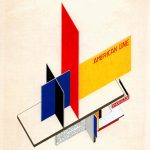
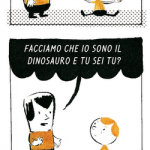
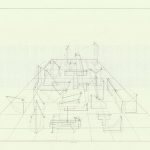
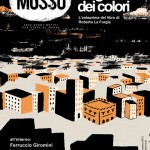
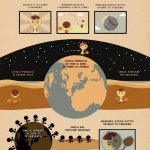
Leave a Reply